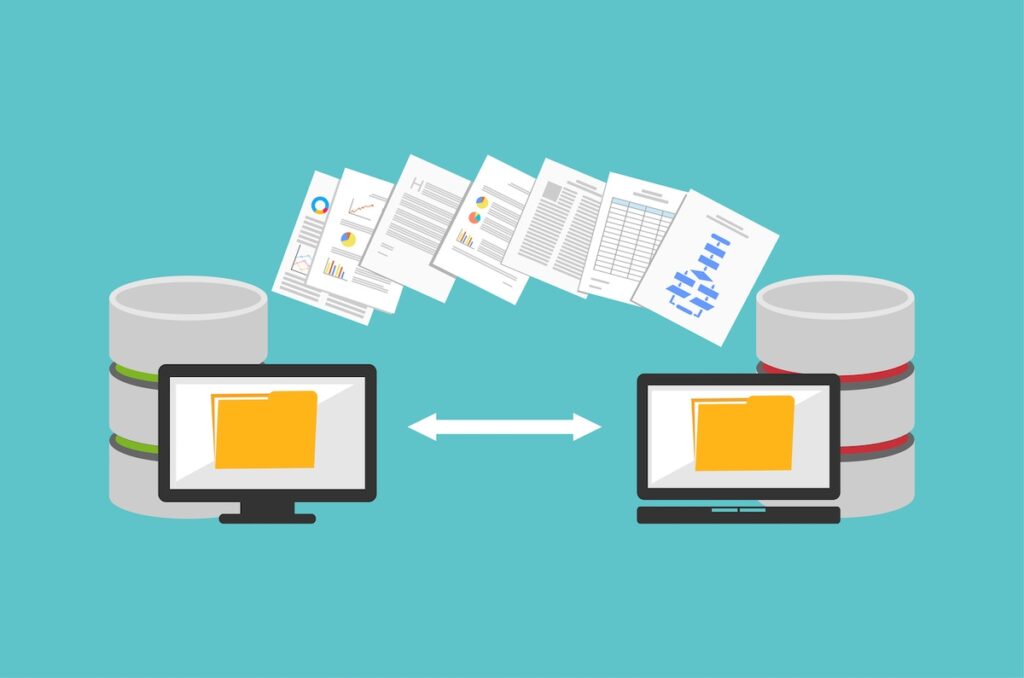
Real-Life Case Study: Lessons Learned from a Successful Azure to AWS Migration
According to the most up-to-date statistics, Amazon Web Services (AWS) retained its top-tier status in 2024 as the frontrunner among cloud service providers, commanding a formidable 32% market share. Hence, the migration from various databases, including Azure, to AWS is a common practice chosen by numerous companies. But, have you ever wondered what sets apart a successful cloud migration from one that falls short of expectations?
While undoubtedly, selecting the right IT company, meticulous planning, and precise execution are of utmost importance, it’s equally crucial to glean insights from the experiences of others. So, before starting the migration process from Azure to AWS on your own, it’s invaluable to explore the experiences of others, uncover the lessons they’ve learned, and navigate the challenges they’ve faced. By standing on the shoulders of those who have gone before, you can avoid potential pitfalls and chart a course that maximizes success while minimizing setbacks.
In the article below, we’ll delve into real-world case studies of companies that have already migrated from Azure to AWS. We’ll explore the challenges they encountered and discover the strategies they employed to overcome them.
Why do organizations migrate from Azure to AWS?
Migrating from Azure to AWS opens doors to a world of possibilities. AWS boasts a robust track record in security, offering numerous certifications and adhering to international security standards. Trusted organizations like NASDAQ, HealthCare.gov, and Dow Jones rely on AWS for its reliability and security features.
Cost efficiency is another key driver, as AWS provides flexible pricing models and cost management tools, allowing organizations to optimize their cloud expenses effectively. AWS also maintains a reputation for innovation and agility, consistently introducing new services and features.
AWS’s extensive global presence surpasses Azure, with over 200 data centers worldwide and 35 local zones, making it a top choice for businesses seeking global cloud solutions. While Azure and AWS are both formidable cloud platforms, specific scenarios make AWS stand out.

Challenges during migration
Below, we are going to examine the experiences of several companies that encountered challenges during their migration from Azure to AWS.
Ferret
Ferret is a company specializing in Relationship Intelligence solutions. Ferret decided to migrate from Azure to AWS due to scalability issues, data migration challenges, and high costs associated with Azure. Here are some challenges that Ferret faced during the migration from Azure to AWS:
- Data migration challenges: During the migration from Azure to AWS, Ferret faced the challenge of seamlessly transitioning their complex infrastructure while adhering to stringent implementation timelines. To address this, they have adopted a meticulous approach, combining re-hosting and re-platforming strategies while also navigating the intricacies of selecting the right AWS-managed services.
- Application compatibility: Applications designed for Azure didn’t seamlessly run on AWS. Differences in configurations, dependencies, and integrations required application modifications or re-architecture to ensure smooth functionality on AWS.
- Networking and Connectivity: Configuring network settings, VPNs, Direct Connect, or Virtual Private Clouds (VPCs) to ensure connectivity between on-premises and AWS resources presented challenges. Developers needed to design an AWS network architecture that aligned with the existing Azure network.
Influence Health
Influence Health offers patient experience solutions to healthcare systems and providers, including a CRM system and digital marketing platform. They migrated from Azure to AWS to access a more flexible cloud service with diverse tools, support more extensive databases, and meet compliance requirements like HIPAA while ensuring scalability, high availability, and security. Here are some challenges that Influence Health encountered during the migration:
- Migrating data and applications that processed protected health information (PHI) while meeting the compliance requirements of the Health Insurance Portability and Accountability Act (HIPAA).
- Re-architecting their application workflows to accommodate larger databases, automated data transformation, and new technologies.
- Integrating AWS services to meet their diverse technical and business requirements.
- Automating the deployment of AWS-managed services and other services running on EC2 instances to streamline operations and support a DevOps workflow.
- Deploying the new system across multiple AWS Availability Zones for enhanced availability and security.

Insights gained from a successful migration
The successful migration journeys of Ferret and Influence Health highlight the importance of careful strategic planning, expert guidance, appropriate migration strategies, automation, and a strong focus on scalability, security, and cost optimization when undertaking cloud migrations. These insights can guide your organization in facing similar challenges in your cloud migration journeys. So, here are some insights:
- Before migrating, thoroughly assess your data migration strategy. Ensure that your ETL tools are compatible with the target cloud platform, and test the migration process with a subset of data to identify and resolve any issues. Consider using cloud-native data migration services to streamline the process.
- Prioritize application assessment and compatibility testing. Evaluate the specific requirements of your applications and understand the differences between Azure and AWS. Prepare for potential code modifications or re-architecture to ensure applications run smoothly on the target cloud. Consider using cloud-agnostic development practices where possible.
- Invest time in network planning and design. Understand the networking capabilities and limitations of both Azure and AWS. Create a detailed network architecture plan that includes VPN or Direct Connect setup, security group configurations, and VPC designs. Ensure network compatibility and test connectivity thoroughly before migration. Collaborate closely with networking experts to avoid connectivity issues.
- Before migration, thoroughly understand the compliance requirements for sensitive data like PHI. Identify AWS services and configurations that support HIPAA compliance. Establish clear data encryption and access control policies. Conduct compliance assessments and audits to ensure adherence to regulations during and after migration. Leverage AWS’s HIPAA-eligible services for secure handling of healthcare data.
- Prioritize application assessment and redesign to align with AWS capabilities. Consider scalability, automation, and emerging technologies when re-architecting. Conduct thorough testing of the updated workflows to ensure they can handle the expected workloads efficiently. Leverage managed services and serverless computing to simplify scaling and automation.
- Invest in automation tools and practices to expedite deployments and ensure consistency. Use infrastructure-as-code (IaC) tools like AWS CloudFormation and automation frameworks like Ansible to manage infrastructure and configurations. Implement continuous integration/continuous deployment (CI/CD) pipelines to automate application deployments. Train your team in DevOps practices to foster collaboration between development and operations.
- Design your architecture with high availability and fault tolerance in mind from the beginning. Use AWS’s Availability Zones and load balancing to distribute workloads across multiple data centers. Implement disaster recovery strategies and regularly test failover procedures. Prioritize security measures, including network segmentation and access control, across Availability Zones.
Takeaways
Before migrating from Azure to AWS, it is always wise to learn from the experiences of others who have already successfully migrated. While the right IT partner, meticulous planning, and precise execution are essential, gleaning insights from real-world case studies can make all the difference. We´ve explored two companies, Ferret and Influence Health, who faced their unique set of challenges during migration, offering valuable lessons. The key takeaways include:
- Prioritizing data migration strategy and compatibility testing.
- Investing in network planning.
- Understanding compliance requirements.
- Embracing automation.
- Re-architecting applications for scalability.
- Designing for high availability and fault tolerance from the start.
Incorporating these insights, your organization can navigate the challenges and maximize the benefits of migrating from Azure to AWS.
